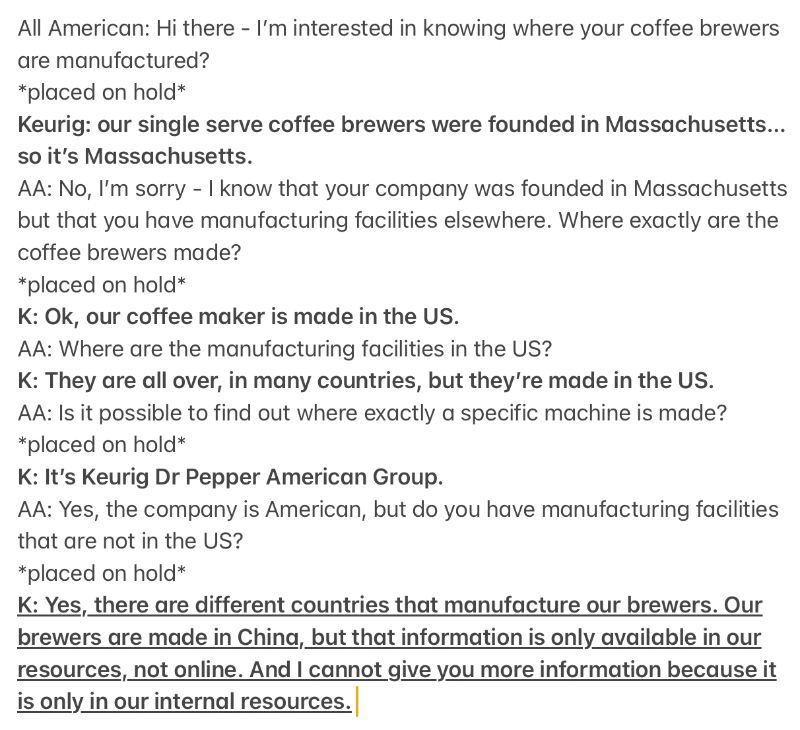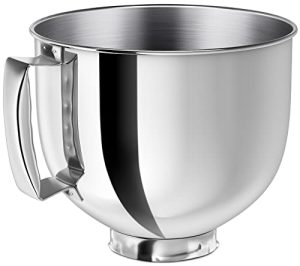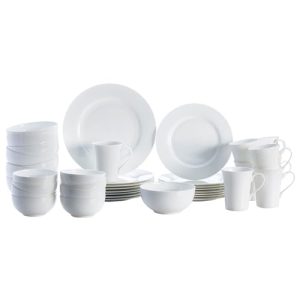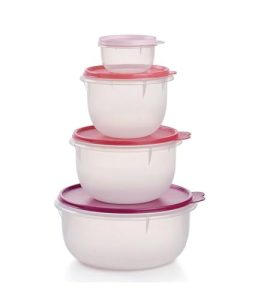Imagine waking up to the aroma of freshly brewed coffee, conveniently made with the push of a button. As you reach for your favorite Keurig coffee maker, have you ever wondered where this ingenious machine comes from?
Are Keurig coffee makers really made in China, or is their origin different than you thought? Understanding the birthplace of your coffee companion not only satisfies curiosity but also impacts your buying decisions. By diving into the details, you’ll discover how the manufacturing location can affect quality, cost, and even your environmental footprint.
This knowledge empowers you as a consumer, making every sip of coffee more meaningful. Curious to learn more? Keep reading to uncover the fascinating truth behind the production of your beloved Keurig coffee maker.

Credit: goodseller-household.en.made-in-china.com
Keurig’s Global Manufacturing
Keurig’s global manufacturing is a topic many coffee lovers are curious about. With coffee makers in millions of homes, understanding where they come from is key. Keurig, a brand known for convenience, has a complex manufacturing network. This network spans several countries, ensuring high-quality products. Let’s dive into the origins and key locations involved in making these popular machines.
Origins Of Keurig Coffee Makers
Keurig coffee makers started in the United States. The brand was founded in the 1990s, focusing on single-serve coffee. The goal was to make coffee brewing simple and fast. Over time, the brand grew in popularity. It became a household name, known for innovation and ease of use. As demand increased, so did the need for wider production capabilities.
Key Manufacturing Locations
Keurig’s manufacturing is spread across the globe. While many parts come from China, not all production is based there. China plays a role in making parts and assembling some models. The country offers cost-effective manufacturing solutions. This helps keep prices competitive for consumers. Other countries also contribute to Keurig’s production. Each location plays a part in ensuring quality and efficiency. This global approach allows Keurig to meet the needs of its vast market. With factories worldwide, the brand maintains a strong presence in the coffee industry.
China’s Role In Keurig Production
Keurig coffee makers are largely produced in China, contributing significantly to their global supply. Chinese factories handle the assembly, ensuring quality and efficiency. This production strategy helps Keurig meet the high demand worldwide.
China plays a significant role in the production of Keurig coffee makers. With its vast manufacturing capabilities, China is home to many of the factories that produce components and assemble these popular machines. But what does this mean for you as a consumer?Factories And Facilities
China hosts several factories dedicated to the production of Keurig coffee makers. These facilities are equipped with advanced technology to ensure efficiency and precision in manufacturing. The availability of skilled labor in China aids in maintaining consistent production schedules to meet global demand.Quality Control Measures
Keurig places a strong emphasis on quality control, even with its production facilities based in China. Rigorous testing processes are in place to ensure that each coffee maker meets the high standards expected by consumers. This includes checks at various stages of production, from component assembly to the final product. You might wonder if a product made far from home meets your expectations. Knowing that Keurig implements strict quality control might ease those concerns. Imagine brewing your morning cup with confidence, knowing the machine was crafted with care. Choosing a Keurig coffee maker involves understanding where it comes from and how it’s made. Does knowing that China plays a crucial role in its production affect your decision? Your choice can be informed by the assurance of quality and the efficiency of production processes behind the brand.Impact Of Chinese Manufacturing
The impact of Chinese manufacturing on products like Keurig coffee makers is significant and multifaceted. Many consumers wonder about the origin of their everyday appliances and the implications that come with them. Understanding the effects of manufacturing in China can help you make informed choices about your purchases.
Cost Efficiency
Chinese manufacturing is renowned for its cost efficiency. This often leads to more affordable products for consumers. The streamlined production processes in China allow Keurig to keep costs down, offering competitive pricing on their coffee makers.
Have you noticed how the price of some appliances seems surprisingly low? That’s the power of cost efficiency in action. By leveraging the economic advantages of Chinese manufacturing, Keurig can pass savings onto you.
Product Quality And Consistency
Quality and consistency are crucial when it comes to coffee makers. Chinese factories have made strides in ensuring Keurig machines meet high standards. This means you can expect reliable performance with each brew.
But what does quality mean for your morning routine? A consistent product ensures your coffee tastes the same every day, eliminating the guesswork. It’s reassuring to know that the machine will deliver, time after time.
Yet, not every product made in China boasts stellar quality. How can you be sure your Keurig will last? Pay attention to user reviews and product specifications. These insights can guide you towards a coffee maker that stands the test of time.
In the end, Chinese manufacturing affects not just the price, but also the reliability of Keurig coffee makers. Whether you’re enjoying a quick cup before work or entertaining friends, you want a product that performs consistently. Consider these factors when choosing your next coffee maker. What matters most to you in a coffee machine?

Credit: allamerican.org
Keurig’s Supply Chain Dynamics
Keurig coffee makers often involve complex supply chains. Many components are sourced from various countries, including China. This global approach helps manage costs and maintain product availability.
Keurig’s Supply Chain Dynamics When you brew your morning cup of coffee with a Keurig, have you ever wondered about the journey those parts took before assembling in your kitchen? The dynamics behind Keurig’s supply chain are fascinating. From sourcing components to delivering the final product, each step is a testament to global collaboration. Let’s dive into the mechanics of this process and see how each part contributes to the whole.Parts Sourcing
Keurig’s coffee makers are a blend of technology and design, and their components come from different parts of the world. While many assume every gadget is made entirely in China, that’s not always the case. Keurig sources parts from various countries, ensuring quality and cost-effectiveness. The circuit boards, essential for the machine’s operation, might come from one region, while the plastic molds are sourced elsewhere. This strategic sourcing allows Keurig to maintain a balance between quality and price. Have you ever thought about how the parts inside your Keurig might have traveled from different continents?Logistics And Distribution
Once the parts are sourced, the next challenge is logistics and distribution. How does Keurig ensure that these components reach their manufacturing plants on time? Efficient logistics are key to keeping production lines running smoothly. Keurig’s logistics team coordinates with shipping companies to transport parts quickly and safely. They utilize a mix of air and sea freight, depending on urgency and cost. This ensures that the components arrive at the assembly line just in time, minimizing storage needs. Once assembled, the coffee makers embark on their journey to reach your local store or online retailer. This distribution network is vast, ensuring that your favorite Keurig model is always available when you need it. Have you ever considered the intricate dance of logistics that brings your coffee maker to your doorstep? Understanding Keurig’s supply chain dynamics not only makes us appreciate our coffee makers more but also highlights the complexity and precision behind everyday products. Next time you sip your coffee, ponder the global journey your machine has taken. Are there other products in your home with such an intricate supply chain?Consumer Perceptions
Consumer perceptions about where products are made can influence buying choices. People often have strong opinions on items manufactured in various countries. Keurig coffee makers, being popular household items, are subject to such views. Understanding consumer perceptions can help brands and buyers navigate these opinions better.
Views On Chinese-made Products
Many consumers have mixed feelings about products made in China. Some appreciate the affordable prices. Others worry about quality and safety standards. These views can affect how people feel about Keurig coffee makers. If they think a product is inferior, they might choose a different brand.
Brand Trust And Loyalty
Brand loyalty plays a significant role in purchasing decisions. If consumers trust a brand, they might not mind where it’s made. Keurig has built a strong reputation over the years. This can help ease concerns about manufacturing locations. Loyal customers often prioritize reliability over origin.
Future Of Keurig Manufacturing
Keurig coffee makers are mostly manufactured in China, offering cost-effective production. This allows the brand to maintain competitive pricing. With advancements in technology, Keurig aims to enhance quality while keeping production efficient.
As we sip our morning coffee brewed by Keurig, many of us wonder about the origins of our favorite coffee maker. The future of Keurig manufacturing is a topic of interest for both coffee enthusiasts and those keen on global production trends. With changing market demands and global dynamics, Keurig’s manufacturing strategy could evolve in intriguing ways. ###Trends In Production Locations
Keurig, like many global brands, has production facilities in various parts of the world. While some of its components are currently made in China, there’s a rising trend in diversifying production locations. This move can be attributed to factors such as trade tariffs, shipping costs, and the desire to be closer to key markets. In recent years, companies have started considering alternatives to China to mitigate risks associated with over-dependence. Countries in Southeast Asia, such as Vietnam and Thailand, are becoming attractive options due to their skilled labor force and competitive manufacturing costs. Could Keurig’s future coffee makers bear labels from these new regions? ###Potential Shifts In Strategy
The coffee industry is experiencing rapid technological advancements. Keurig might shift its strategy to incorporate more automated processes, potentially altering where and how their machines are made. Automation can reduce costs and improve quality, paving the way for manufacturing in tech-friendly regions. Another strategic consideration for Keurig could be sustainability. As environmental concerns grow, Keurig might look towards greener manufacturing practices. This could involve choosing locations with access to renewable energy sources or implementing eco-friendly production techniques. Imagine a future where your Keurig is not only efficient but also environmentally conscious. The question remains: How will Keurig adapt to these trends and strategies? As consumers, your preferences and concerns play a crucial role. Your demand for quality and sustainability could shape the future of Keurig manufacturing. So, next time you sip your coffee, ponder over the journey it took to reach your cup.
Credit: www.ebay.com
Frequently Asked Questions
Are Keurigs Made In China?
Yes, some Keurig coffee makers are made in China. Keurig sources components globally for manufacturing. Always check product labels for specific details.
What Is The Lawsuit Against Keurig?
The lawsuit against Keurig accuses them of monopolistic practices. It alleges that Keurig restricted competition by designing machines incompatible with third-party pods. The plaintiffs claim this led to higher prices and reduced consumer choice. The lawsuit seeks compensation and changes to Keurig’s business practices.
Are Cuisinart Coffee Makers Made In China?
Yes, many Cuisinart coffee makers are manufactured in China. Cuisinart sources parts globally for quality and affordability. Check product labels or descriptions for specific manufacturing details. This ensures you have accurate information about the origins of your coffee maker.
What Is The Average Lifespan Of A Keurig?
Keurig coffee makers typically last 3 to 5 years. Regular maintenance extends their lifespan. Descaling every 3 to 6 months helps prevent mineral buildup. Proper care ensures optimal performance and longevity. Consider upgrading if issues persist despite troubleshooting.
Conclusion
Keurig coffee makers come from diverse manufacturing locations, including China. This global approach helps meet consumer demand efficiently. Many brands choose China for production due to cost-effectiveness and expertise. Quality control remains a top priority, ensuring reliable products. Consumers should research and verify product origins if it concerns them.
Understanding where products come from helps make informed decisions. Always check labels and manufacturer information. This way, you know what you’re buying. Enjoy your coffee experience with confidence, knowing the origins of your Keurig.



